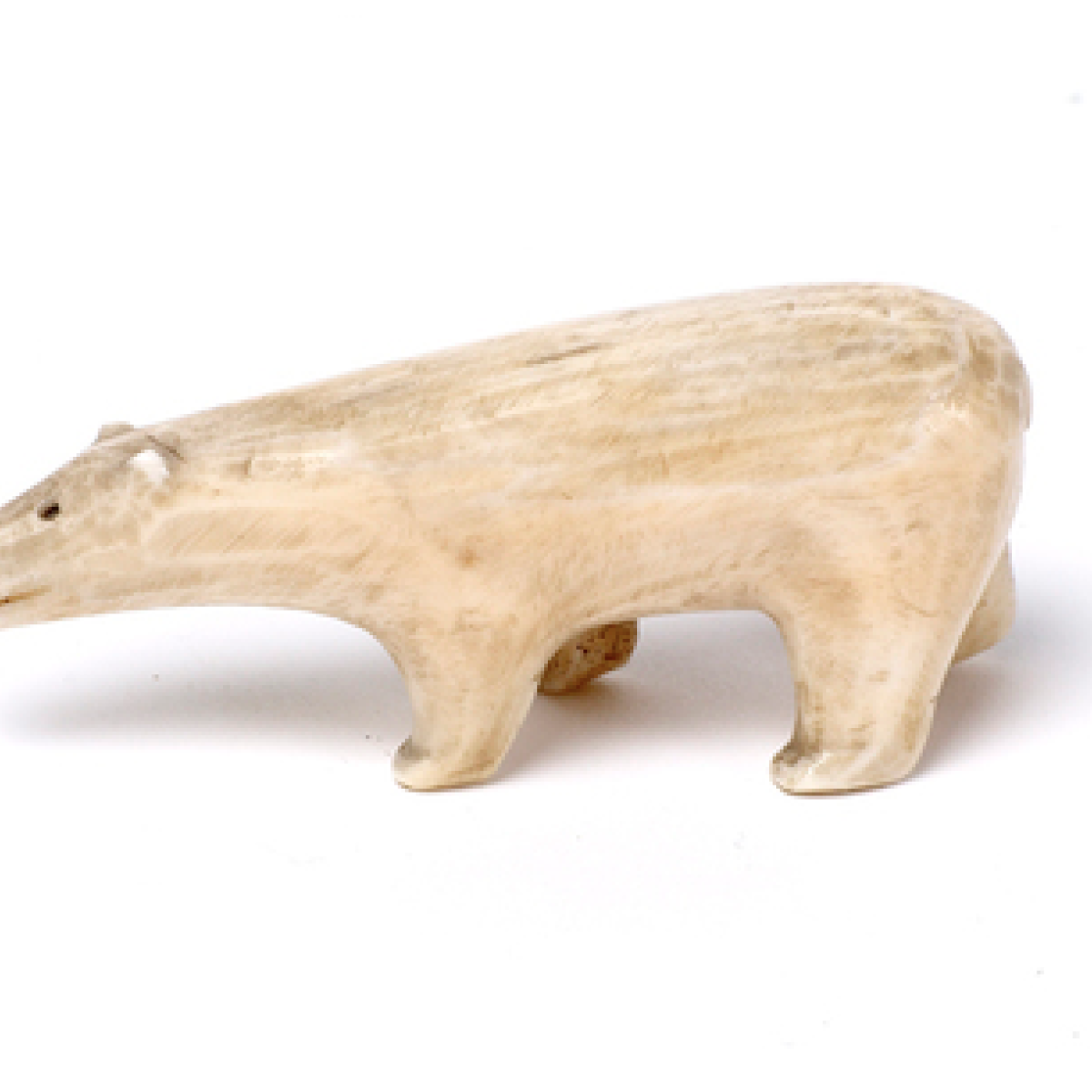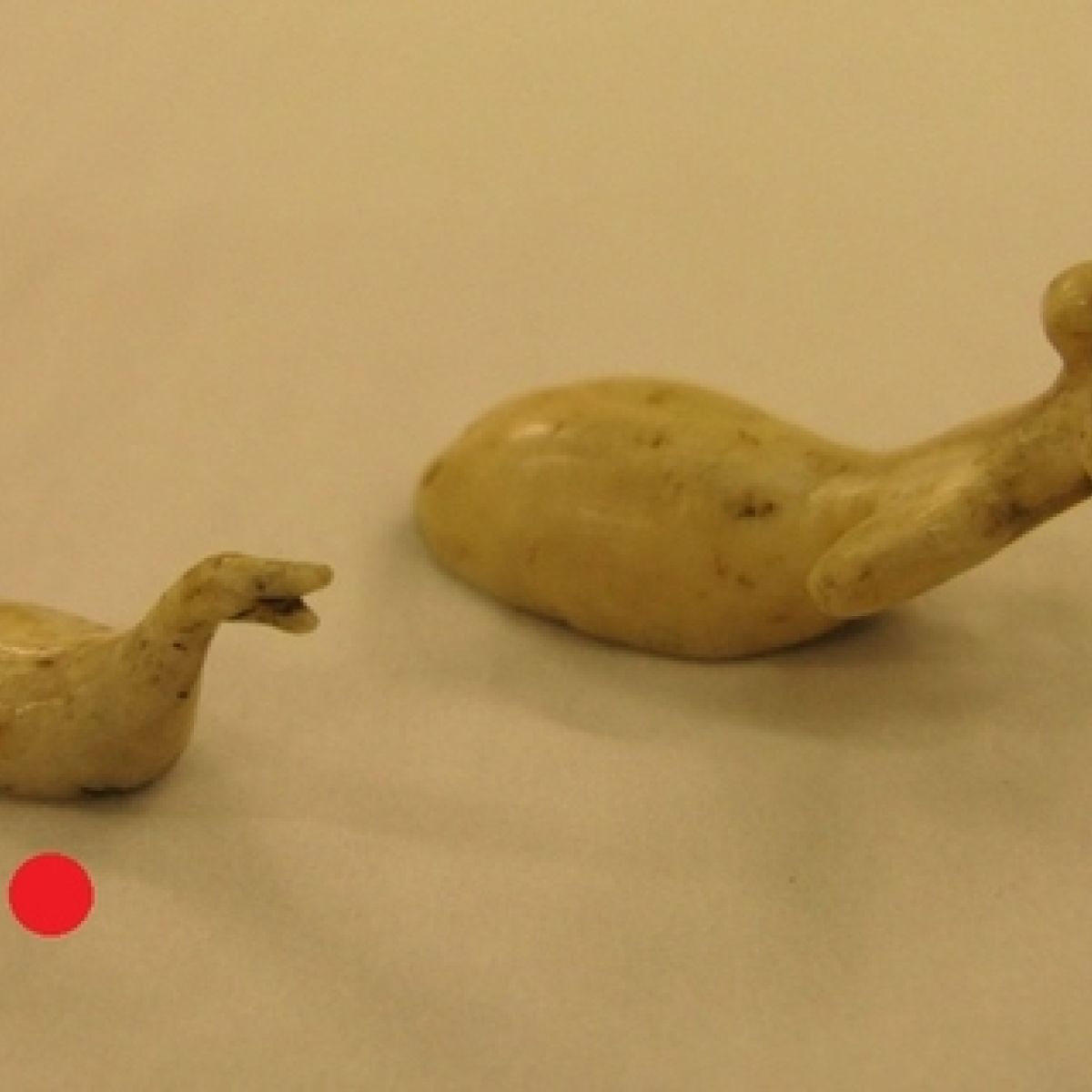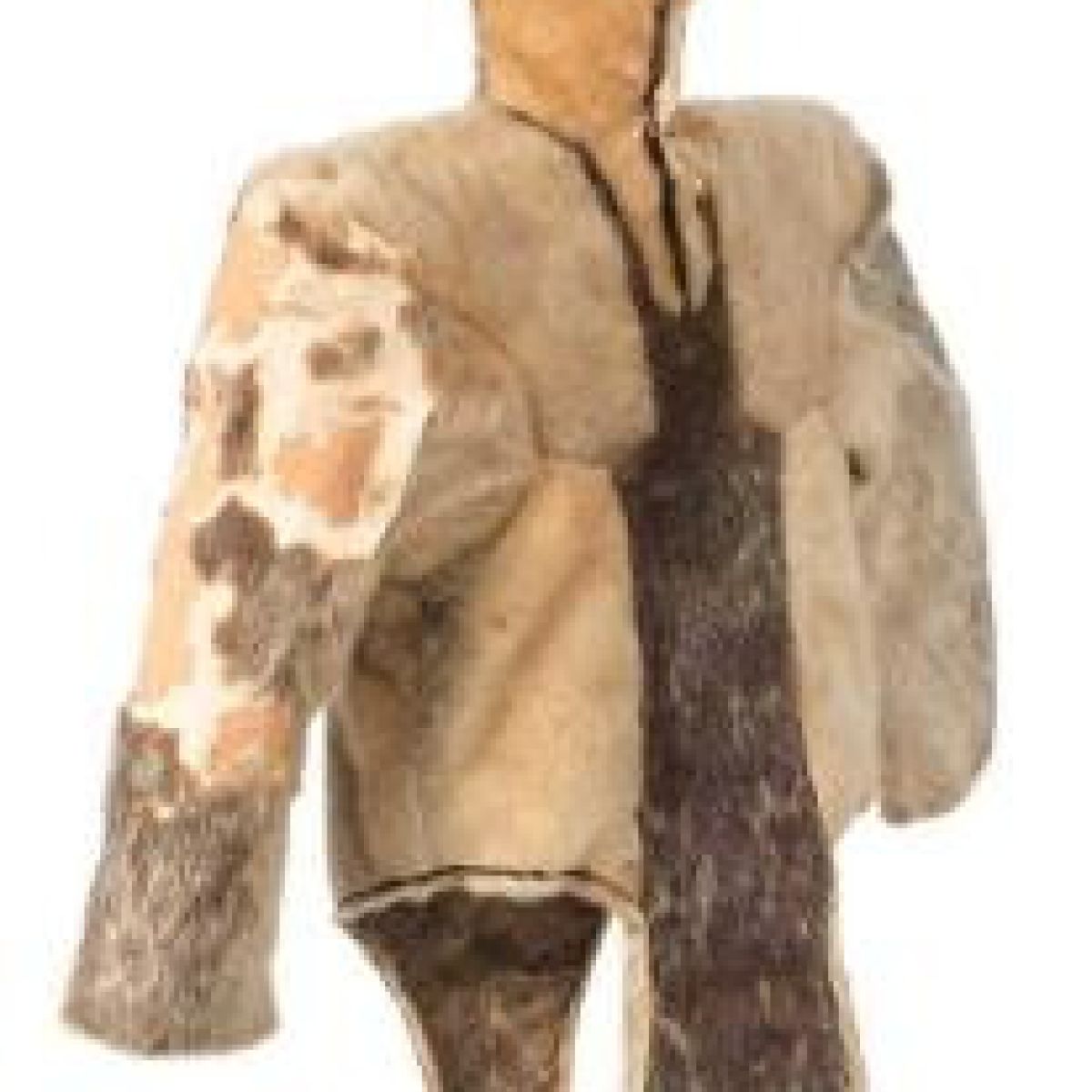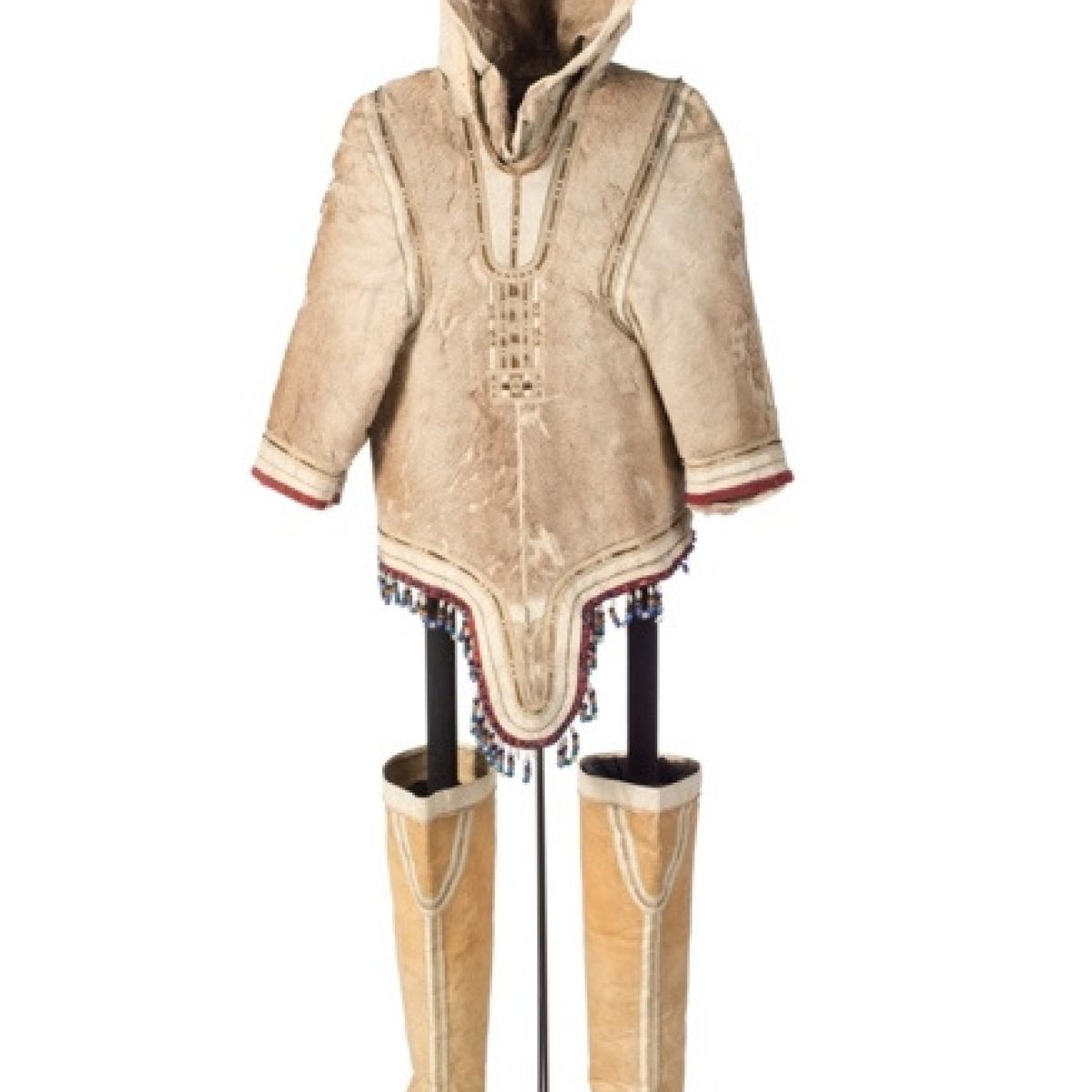21st July 2020
Jocelyn, Research and Documentation Assistant, is based at the Hull Maritime Museum. Normally she would be helping to document the collection so that it is ready for the huge object move as part of our project. But instead, she's working from home!
Here's Jocelyn's latest lockdown blog.
Hello! For my research this week I was interested in finding out more about this small object:

I wanted to know more about where this little figurine might be from, and why it might be wearing clothes with such a long ‘tail’.
A lot of Inuit art concerns the natural world, with familiar forms repeated – bears, birds, seals. We have a small igloo carved from bone in the collection too – these types of everyday scenes are repeated in Inuit art.
First things first – I searched in other museums to see whether they might have similar objects in their collection, which might tell us more about our object.
And it turns out that the Canadian Museum of History have one almost identical.
(They also have a huge number and variety of tupilak, which makes me certain our object is one – see blog 2 – kicking myself for not checking here sooner!)

Unfortunately they only attribute their little figurine to ‘Greenland Eskimo culture’ – they don’t have much more information than we do! Although theirs is listed as mammal bone, whereas ours is described as halibut bone (which always struck me as odd, as most of our bone carved objects are mammal bone).
Greenland is part of the Kingdom of Denmark, so to find out more about Greenlandic material culture, I looked to the National Museum of Denmark (I already knew that the National Museum of Greenland doesn’t have their collections available to view online). The National Museum of Denmark has an excellent database of what they call “skin clothing”, which combines collections from Norway, Denmark and Greenland.
As you can see, some of these Greenlandic parkas have a long tail, like our figurine is wearing. But these examples aren’t quite the same – the tails aren’t long enough and our figurine has visible decoration, perhaps stitching or beadwork, on her parka.
So – I headed to Google Books to do some research about Inuit clothing. And having read the book Sinews of Survival: The Living Legacy of Inuit Clothing by Betty Kobayashi Issenman (1997) I found that the woman in the carving could be wearing an amauti, a parka with a built-on baby pouch just below the hood.
There are two styles – the long-tailed angijuqtaujaq, and the shorter style akulik. The hood shape, decoration and tail shape all speak to the region of origin of the amauti. The sleeves and hem are often trimmed with solid colour stripes – as they are on our figurine.
From a google search, it turns out that Manitoba Museum has examples of parkas with long tails – amauti were worn in both Greenland and in Nunavut territory, Canada.
Traditional amauti had to be custom made to the wearer, to allow them to fit tightly enough to not let in any cold air.
One article I read said that: “In addition to its practicality, a traditional amauti also symbolised a woman’s phase of life. Its design and decoration told whether the wearer was a young girl, married or a widow, if she had children and which region she was from. The pouch itself would also start small, designed to fit a newborn baby. As the baby grew, additional panels would be added to make the pouch bigger.” https://uphere.ca/articles/anatomy-amauti
Inuit families were traditionally always on the move – they had to move to where the animals were that they relied on for food and clothing. Wearing amauti meant that women could walk and do daily tasks with their hands free, and look after their children all at the same time.

This outfit, again on the National Museum of Denmark website, shows to me the closest in style of clothes to what our figurine is wearing. The clothes were worn by Inuit in Canada, not Greenland, so our little figurine may be Canadian.
There is a beautiful example of a beaded amauti from Nunavut on the website of the National Museum of the American Indian, here: https://americanindian.si.edu/static/exhibitions/infinityofnations/arctic-subarctic/137198.html
So this figurine may be from Nunavut, and she could be wearing an amauti, which would explain the long tail on her parka!




